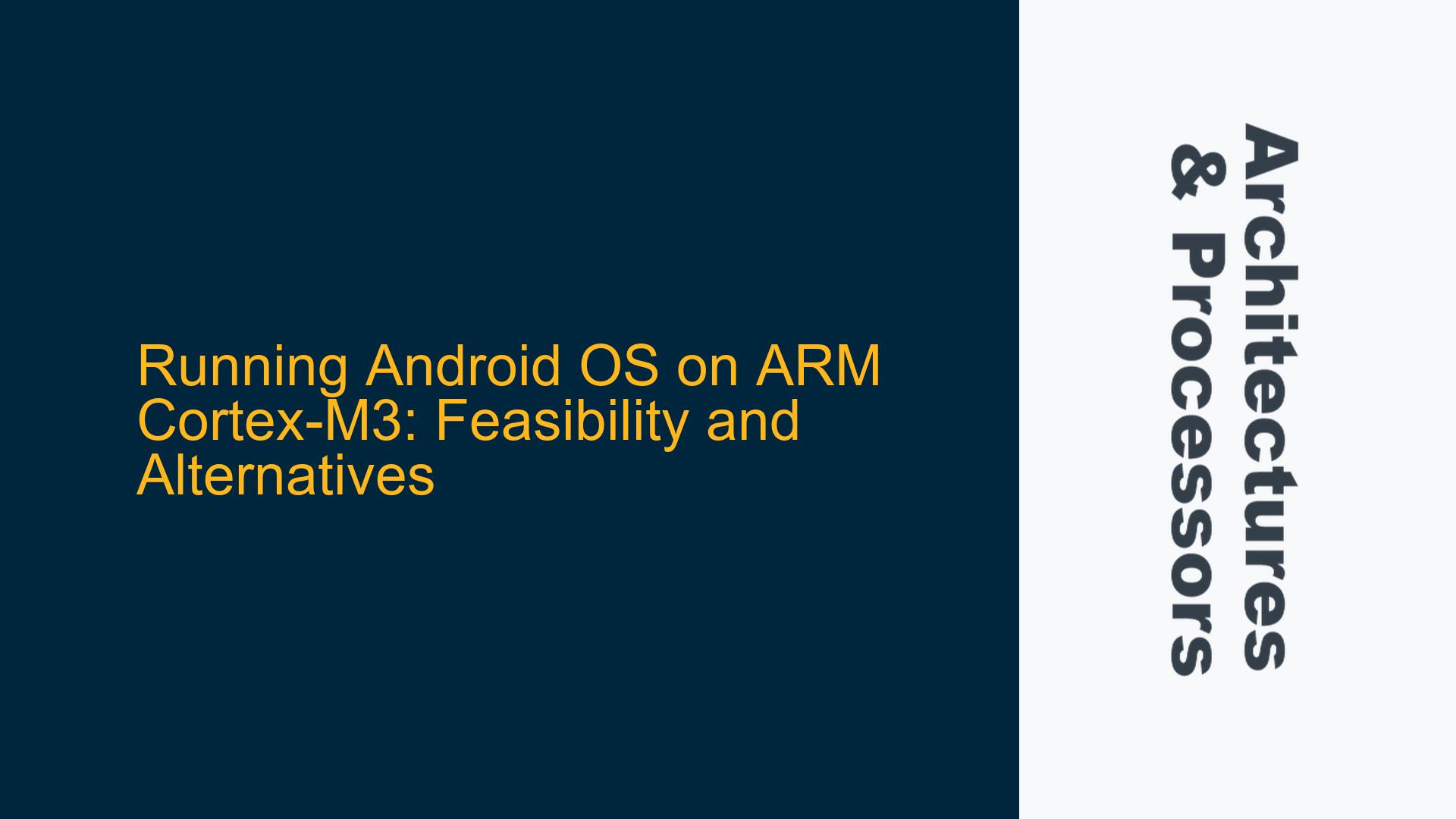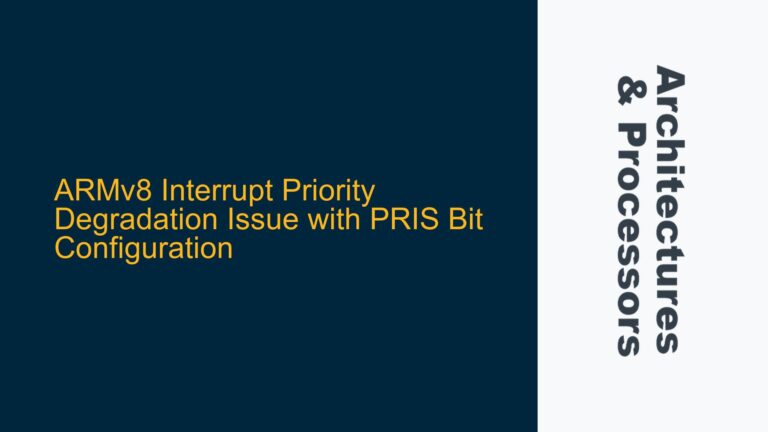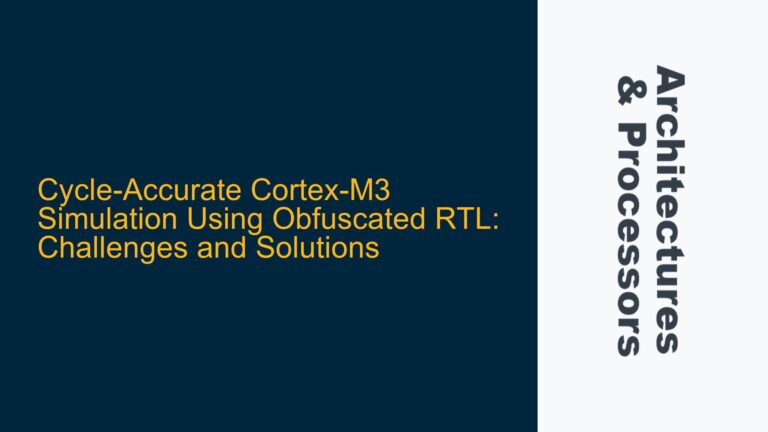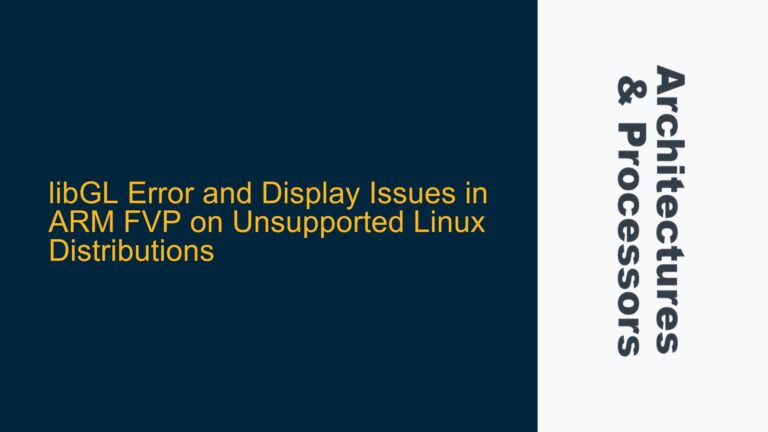ARM Cortex-M3 Limitations for Android OS Installation
The ARM Cortex-M3 processor, such as the one found in the NXP LPC1788 microcontroller, is a highly efficient and power-optimized processor designed for real-time embedded applications. However, its architecture presents significant limitations when attempting to run a complex operating system like Android. The primary issue stems from the absence of a Memory Management Unit (MMU), which is a critical hardware component required by Android. The MMU is responsible for virtual memory management, enabling features like memory protection, address translation, and paging, which are essential for running a multi-tasking, multi-user operating system like Android.
The Cortex-M3 is based on the ARMv7-M architecture, which is optimized for deterministic real-time performance and low-latency interrupt handling. This makes it ideal for applications like industrial control systems, automotive systems, and IoT devices, where real-time responsiveness is crucial. However, the lack of an MMU means that the Cortex-M3 cannot support the virtual memory model required by Android. Android relies heavily on virtual memory for process isolation, memory allocation, and security, which are not feasible on a processor without an MMU.
Additionally, the Cortex-M3 has limited resources compared to application processors like the Cortex-A series, which are designed to run operating systems like Android. The Cortex-M3 typically has a smaller amount of RAM and flash memory, which further restricts its ability to handle the memory-intensive requirements of Android. For example, the LPC1788 microcontroller has up to 512 KB of flash memory and 96 KB of RAM, which is insufficient for running Android, which typically requires hundreds of megabytes of RAM and several gigabytes of storage.
MMU Absence and Resource Constraints in Cortex-M3
The absence of an MMU in the Cortex-M3 is the most significant barrier to running Android. The MMU is responsible for translating virtual addresses to physical addresses, allowing the operating system to manage memory efficiently. Without an MMU, the Cortex-M3 cannot support the virtual memory model that Android relies on. This means that Android cannot provide the necessary memory protection, process isolation, and security features that are critical for a modern operating system.
In addition to the lack of an MMU, the Cortex-M3 has limited computational resources compared to application processors like the Cortex-A series. The Cortex-M3 is designed for low-power, real-time applications, and as such, it has a relatively low clock speed and limited processing power. For example, the LPC1788 microcontroller typically operates at frequencies up to 120 MHz, which is significantly lower than the GHz-range clock speeds found in Cortex-A processors. This limited processing power further restricts the Cortex-M3’s ability to handle the computational demands of Android, which requires significant processing power for tasks like graphics rendering, application execution, and multitasking.
The limited amount of RAM and flash memory in the Cortex-M3 is another significant constraint. Android requires a large amount of memory to run efficiently, with typical minimum requirements ranging from 512 MB to 2 GB of RAM. In contrast, the LPC1788 microcontroller has only 96 KB of RAM, which is orders of magnitude less than what is required by Android. Similarly, the 512 KB of flash memory in the LPC1788 is insufficient for storing the Android operating system, which typically requires several gigabytes of storage.
Alternatives to Android for Cortex-M3: Lightweight OS Options
Given the limitations of the Cortex-M3, running Android is not feasible. However, there are alternative operating systems that are better suited to the Cortex-M3’s architecture and resource constraints. One such option is FreeRTOS, a real-time operating system (RTOS) that is specifically designed for microcontrollers like the Cortex-M3. FreeRTOS is highly efficient and has a small memory footprint, making it ideal for resource-constrained environments. It provides basic task scheduling, inter-task communication, and synchronization primitives, which are sufficient for many embedded applications.
Another alternative is Zephyr, an open-source RTOS that is designed for resource-constrained devices. Zephyr supports a wide range of ARM Cortex-M processors, including the Cortex-M3, and provides a modular architecture that allows developers to include only the components they need. Zephyr also includes support for networking protocols, file systems, and device drivers, making it a versatile choice for IoT and embedded applications.
For developers who require a more feature-rich operating system, µC/OS-II is another option. µC/OS-II is a commercial RTOS that provides a wide range of features, including task management, memory management, and inter-task communication. It is highly configurable and can be tailored to the specific requirements of the application. However, it is important to note that µC/OS-II is not free, and licensing fees may apply.
In addition to these RTOS options, there are also lightweight versions of Linux that can run on processors without an MMU. One such option is uClinux, a variant of Linux that is designed for microcontrollers. uClinux eliminates the need for an MMU by using a flat memory model, which simplifies memory management but also limits the functionality of the operating system. While uClinux does not provide the full feature set of mainstream Linux, it can still be a viable option for certain embedded applications.
In conclusion, while the ARM Cortex-M3 is not capable of running Android due to its lack of an MMU and limited resources, there are several alternative operating systems that are better suited to its architecture. FreeRTOS, Zephyr, µC/OS-II, and uClinux are all viable options for developers looking to run an operating system on the Cortex-M3. Each of these operating systems has its own strengths and weaknesses, and the choice of which one to use will depend on the specific requirements of the application. By selecting the appropriate operating system, developers can leverage the strengths of the Cortex-M3 while avoiding the limitations that make running Android infeasible.






